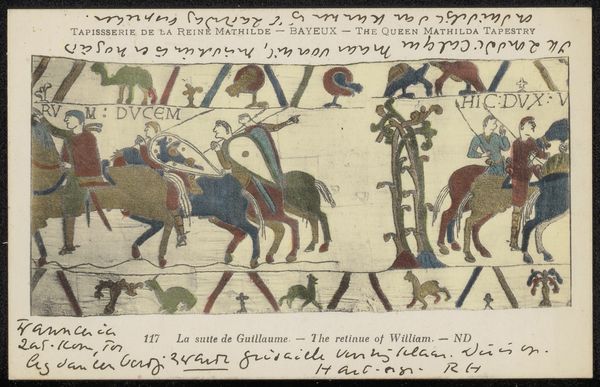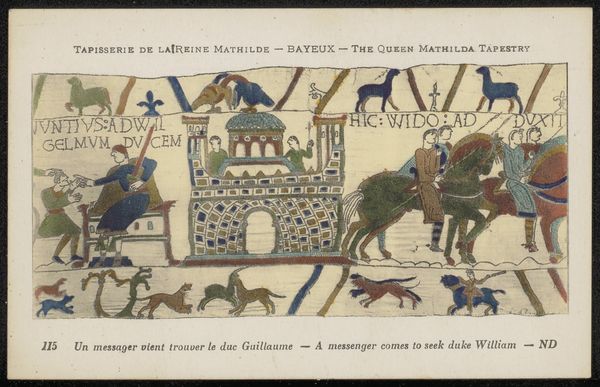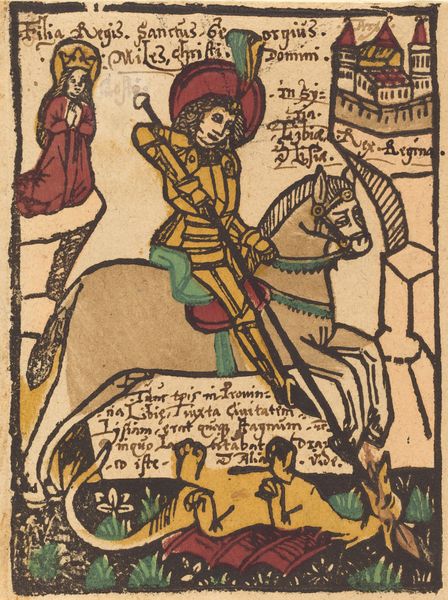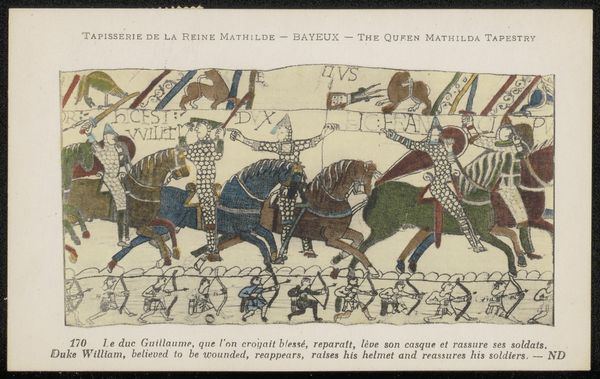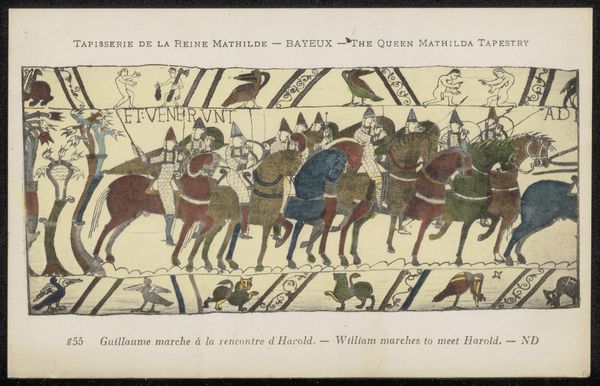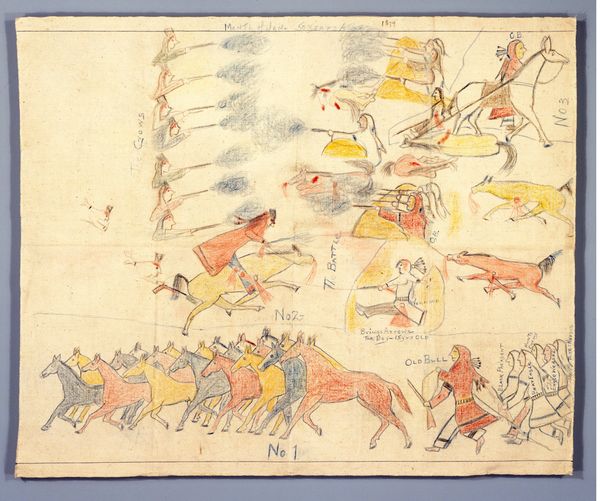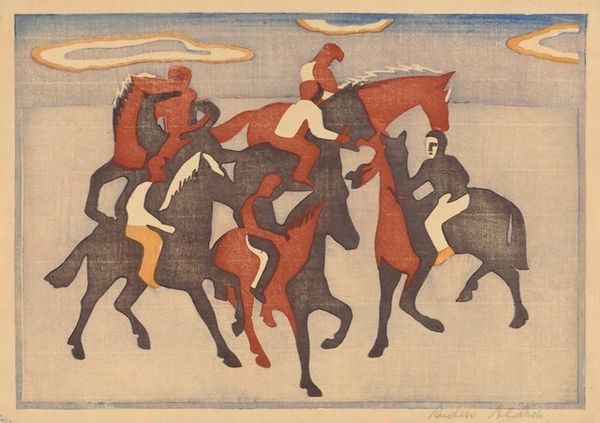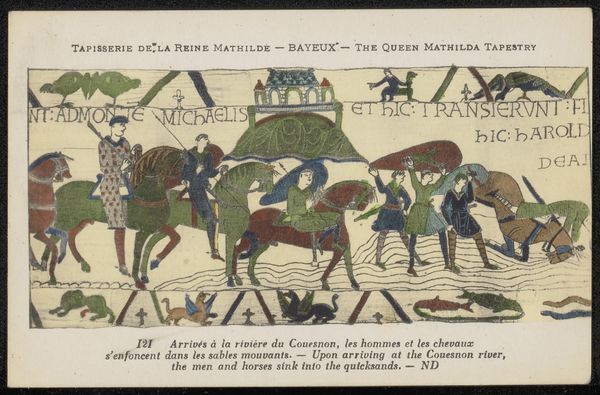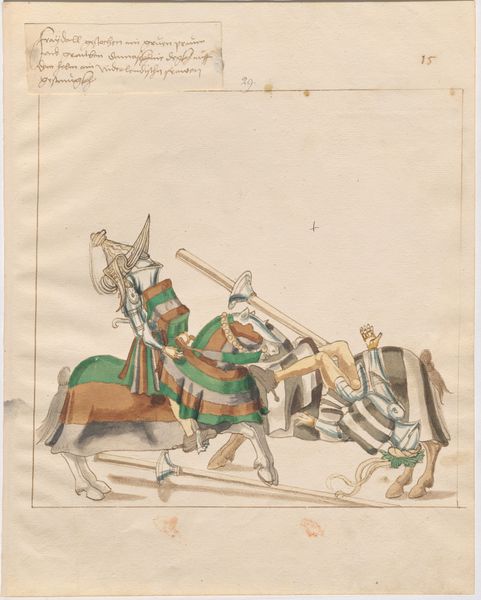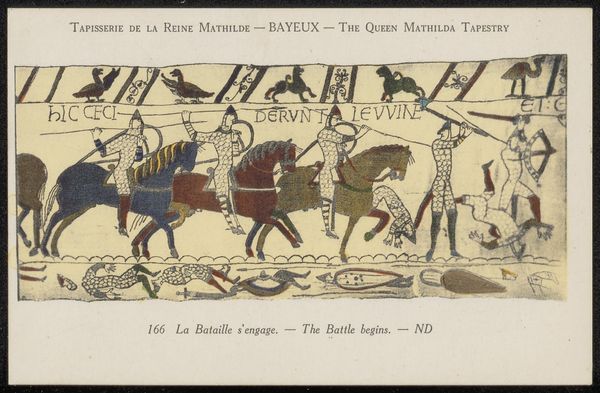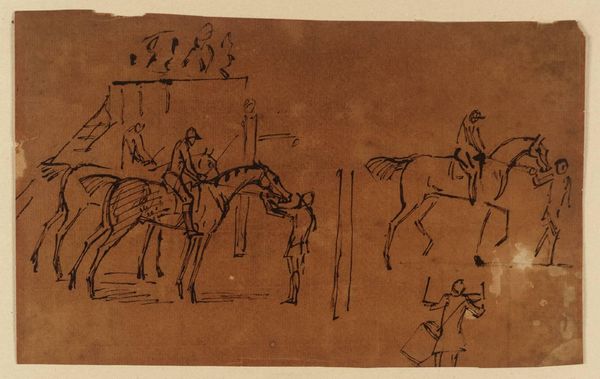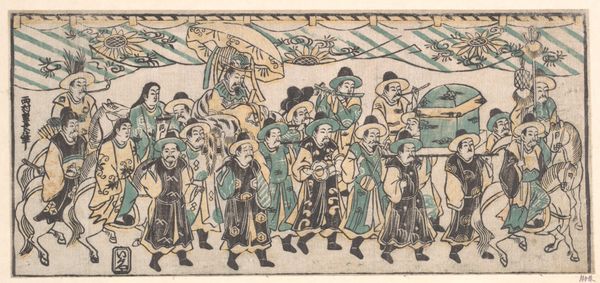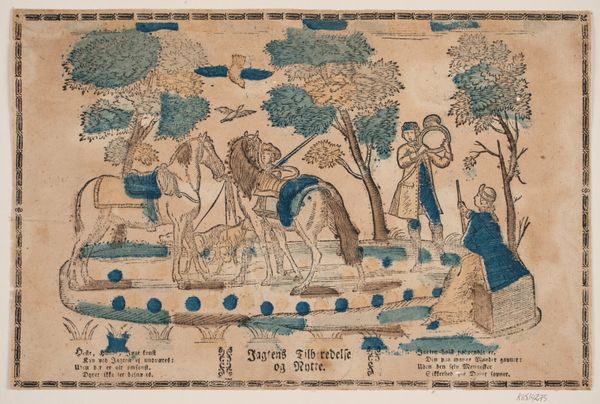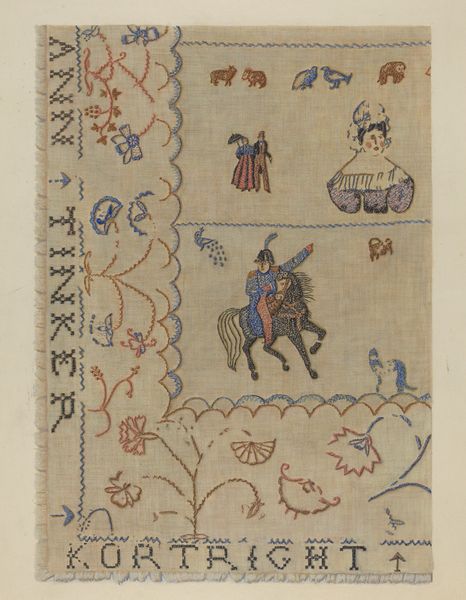
textile
#
medieval
#
narrative-art
#
textile
#
linocut print
#
history-painting
#
trompe-l'oeil
Copyright: Rijks Museum: Open Domain
This postcard by Richard Nicolaüs Roland Holst captures a section of the Bayeux Tapestry, focusing on Duke William addressing his troops. Note the commanding presence of the horses and riders, recurring motifs of power and conquest. This scene evokes similar images across cultures and eras. Consider the equestrian statues of Roman emperors; the horse symbolizes dominance and control. But the tapestry's figures, with their stylized forms, carry echoes beyond mere power. The decorative border, filled with animals, recalls ancient bestiaries, a primal link to the natural world. Over time, the horse as a symbol has been adapted, shifting from a representation of brute force to one of nobility, even grace. This fluidity, this evolution, mirrors our own subconscious—collective memory shaping the narratives we create and the symbols we embrace. It's a reminder that images are never fixed; they are living entities, constantly reshaped by the currents of history and the depths of human emotion.
Comments
No comments
Be the first to comment and join the conversation on the ultimate creative platform.
